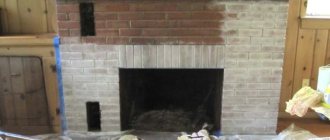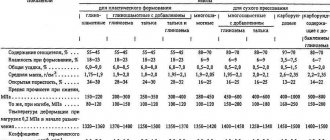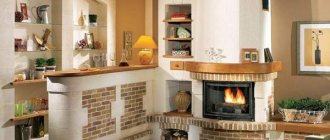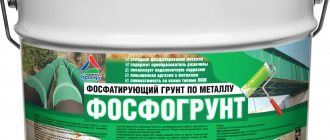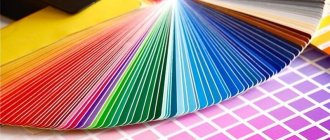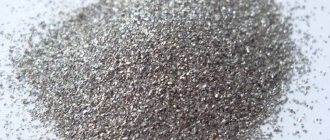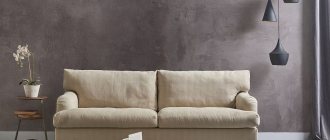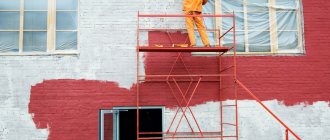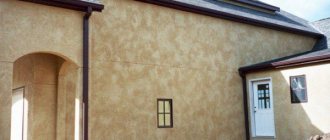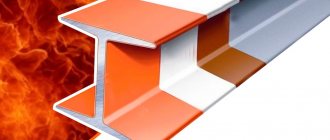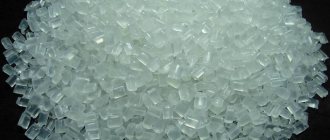Having a structure such as a fireplace or stove in the house, it is necessary from time to time to tidy up not only their internal chimney ducts, but also the appearance of these structures.
Fireplace painted with red heat-resistant paint
But in order not to get into an unpleasant situation and not to do wasted work, you need to know which paint is most suitable for stoves and fireplaces.
What did you paint with before?
Previously, Russian stoves were treated with chalk and lime-based whitewash.
The consistency of the whitewash should have been like liquid sour cream. Before starting to paint, the surface was processed - cleaned of dirt, dust and clay. The paint was prepared as follows: for 100 g of lime, take 40 g of salt, previously dissolved in water. They also painted stoves and fireplaces with chalk. It was first sifted through a sieve, then diluted with milk and mixed thoroughly. If the solution turned out yellow, then blue was added. This paint was applied in several layers, and the surface had to be moistened with water. Then the first layer was applied, and after complete drying the next one was applied.
Painting with chalk or lime
A brick stove or fireplace made of bricks can be painted with lime whitewash. Its consistency should resemble liquid sour cream. Before painting the stove, it is necessary to carry out preparatory work: clean the surface of the stove from dust, dirt and clay. This can be done using a scraper or an iron spatula. Residues should be brushed off. For 100 g of lime you should take 35-40 g of salt dissolved in water. The paint obtained in this way is highly durable. If you paint a surface with it, it leaves no marks.
You can also paint a brick stove with chalk, which should first be sifted through a sieve, diluted with skim milk and stirred thoroughly. If the resulting solution has a yellow tint, you can add a little blue to it.
Before painting the surface of the stove, it must be moistened with water. This solution is applied in a very thin layer 2-3 times. Moreover, the next layer is applied to the well-dried previous one.
What paints to use
The principle of operation of the furnace.
Decorative qualities are of great importance, but some features should be taken into account. For example, a shiny surface is much less able to transfer heat. In this regard, it is better to refuse to cover the stove with glossy paints, for example, aluminum. If the stove is built taking into account all the rules, and there is sufficient thickness of the walls of the fireplace, then the heating of the outer side can reach 80 degrees. This temperature is maintained by many synthetic compounds. These include pentaphthalic paints, nitro paints and others.
As for many oil paints, the basis of which is natural drying oil, during use they darken, especially in those spots that are the hottest. There are many heat-resistant paints on the market that are ideal for painting fireplaces and stoves. The downside is that the choice of colors for such paints is quite limited.
Times have changed and no one cooks whitewash today. Modern owners of Russian stoves and fireplaces prefer other means. Let's look at each option in more detail.
Natural drying oil
Natural drying oil is used as stove paint - this coating does not change the color of building materials, but slightly changes the shade to a darker side.
Along with drying oil, silicone paints are widely used for brick stoves. These compositions have many advantages:
- high adhesion to any materials;
- coating strength;
- resistance to moisture;
- high durability;
- heat resistance (withstands more than 200 cycles of temperature changes).
PF-283 varnish is also often used for painting fireplaces. It is a mixture that includes alkyd resins, modified vegetable oils, fatty acids and other additives. The varnish is mixed with turpentines in equal proportions. This increases the durability of the coating. After drying, a glossy transparent and very durable layer is formed on the surface.
Heat resistant paint
The most popular option is the use of heat-resistant paints for stoves and fireplaces. The material has a huge number of advantages:
- large range of colors;
- this is a heat-resistant paint - it can withstand temperatures up to 600 degrees;
- the surface of brick stoves and fireplaces is reliably protected from oxidation;
- the material has increased strength and wear resistance characteristics;
- performance qualities are maintained for more than 10 years.
Heat-resistant paint also has disadvantages, among which we especially need to highlight its aggressive composition, unpleasant odors, and long drying time. Due to the presence of toxic substances in the composition, you should be careful when working with thermal paint.
Paints for brick kilns and methods of their use
The main criterion when choosing paint for a brick oven is its heat resistance.
A finishing method such as painting a brick stove with oil or enamel paints will allow it to emit a large amount of heat. The darker the paint color, the more heat the surface of the brick oven can give off. Moreover, it is known that shiny smooth surfaces have worse heat transfer. When choosing how to paint a brick stove, you should not paint it with aluminum paints and the like. If the thickness of the walls of the furnace hearth meets certain standards, its outer side can reach a temperature of 80°C. Synthetic compounds such as nitro paints, pentaphthalic paints and many others can withstand such heating. Oil paints made from drying oil, if used to paint the surface of a stove, may darken at this temperature.
Today, construction stores sell paints for a brick stove or fireplace that have high heat resistance. However, their color range is quite scarce. If the required shade still cannot be found, the brick oven can be treated with a special primer and painted with latex paint.
Before purchasing the paint required for your brick kiln, you should ensure that it is heat resistant. For this purpose, the best option is to use silicon-organic enamel.
After all, it is capable of maintaining its performance qualities at temperatures up to 600°C. As a solvent for this type of enamels, either turpentine or solvent 646 is used. To get a good result, a brick stove should be painted in a thin layer without smudges in 2-3 approaches.
Rating of the best paints on today's market
The need to paint stoves, brick chimneys and fireplaces is quite common. Demand creates supply, so in stores you can find many compositions suitable for this purpose from Russian and foreign companies.
From the outside, an ordinary brick oven heats up to 60-90°C, and a sauna oven – up to 110°C. The temperature of the hob and combustion door can reach up to 400°C when heating with wood and up to 700°C when heating with coal. Therefore, the space near them can heat up to 140°C.
Thus, the paint that will be used to paint the stove must withstand temperatures up to 140°C and adhere well to brick or concrete. The above rating includes well-established and frequently sold brands from both well-known and poorly promoted manufacturers.
Special varnish from a well-known Russian manufacturer of heat-resistant paints. The appearance of the treated surface, depending on the number of layers, can be from matte to semi-glossy.
One can is enough for approximately 2 m2 of brickwork. For a standard size oven when painting in 1 layer, 2 of these sprays are required
Specifications:
- color: transparent;
- maximum temperature (°C): 250;
- packaging: spray can, jar;
- displacement (l): 0.52 (can), 0.8 (can);
- gloss: matte or semi-gloss.
Drying time is 3 hours, and for complete polymerization 3 days at room temperature are enough. The recommended number of layers is 1-2. Product consumption is 120-150 g/m2 for metal and up to 200 g/m2 for not very smooth brick.
The product is not demanding on application conditions. Work can be carried out at low temperatures and at high (up to 80%) relative humidity.
Russian-made paint often found on the market. One of its significant advantages is the possibility of machine tinting and achieving almost any color.
Black paint can withstand the highest temperatures (up to 1000°C). Then there are the color options: gray, gold and copper (up to 700°C)
- color: 250 shades;
- maximum temperature (°C): 250-1000;
- packaging: spray can, jar, bucket;
- displacement (l): 0.52 (can), 0.8 (can), 25 (bucket);
- gloss: matte or semi-gloss.
Pigmentation leads to a decrease in the maximum permissible temperature. But for many color solutions it is still quite high (600°C or more), so it can also be used to coat metal parts of brick stoves and fireplaces.
Universal enamel, with the best permissible temperature indicator among paints in this rating. But it has a fairly high price, since the company enjoys well-deserved respect due to the high quality of its products.
The paint has good qualities - it adheres reliably to the surface and dries quickly. The label and all the information are in English, but you can use the aerosol correctly without instructions
- color: transparent, black, aluminum;
- maximum temperature (°C): 1090;
- packaging: spray can;
- displacement (l): 0.52;
- gloss: matte.
This composition is used mainly for painting metal products, although it can also be applied to brick and concrete bases. This is very convenient, since one product can be used to treat both the walls of a stove or fireplace and very hot metal elements, without having to buy heat-resistant metal paint separately.
This enamel is universal and suitable for painting surfaces made of brick, concrete and metal. Made in the USA. It has good quality and a high price.
In terms of its quality, this paint is similar to a higher-rated position, but is characterized by a lower maximum permissible temperature. But for brick surfaces this does not matter
- color: silver, black;
- maximum temperature (°C): 538;
- packaging: spray can;
- displacement (l): 0.52;
- gloss: matte.
Usually one coat is enough for painting, and the drying time is 4 hours. After this, it is necessary to carry out thermal hardening. The paint lasts a long time on the surface and is resistant to physical impact.
High-quality and expensive black enamel from a well-known German manufacturer is one of the best representatives of the “family” of heat-resistant enamels. It is expensive and has small packaging, so it is used only for covering small surfaces.
This paint is rarely used for stoves due to its high cost. But if you need to treat a small area, you can use it
- black color;
- maximum temperature (°C): 140;
- packaging: jar;
- displacement (l): 0.125;
- gloss: glossy.
Dufa products have lower temperature resistance than all other types presented in the rating. Therefore, before using this heat-resistant paint to cover the surface of a brick stove or fireplace, you need to make sure that the masonry does not heat up to temperatures above 140°C.
The paint does not require heat hardening. The interlayer drying period is a day, although usually only a single-layer coating is used.
6th place – Motip
Clear varnish made in Holland. The price is quite high, which, combined with the application of 2-3 layers, makes this product expensive. But the quality of this heat-resistant aerosol is very good.
The product under the Motip brand has very high heat resistance, which is not typical for clear varnishes. It can also be used on metal, such as a fireplace grate.
- color: transparent;
- maximum temperature (°C): 650;
- packaging: spray can;
- displacement (l): 0.4;
- gloss: matte.
The drying time between coats is only 5 minutes, and complete drying occurs in 40 minutes - these are good indicators.
In addition to varnish, there is also thermal paint from this company in black and silver, which is also suitable for processing brick.
7th place – Abordage
Made in China, Abordage's heat-resistant spray is used primarily for automotive applications, but can also be used to protect and decorate brick and concrete surfaces.
Another paint that is suitable for painting stoves and fireplaces. Does not stand out with any special properties compared to competitors
- color: silver, black;
- maximum temperature (°C): 200-300;
- packaging: spray can;
- displacement (l): 0.4;
- gloss: matte.
This spray produces bright and rich colors, so one coat is usually enough for high-quality coverage. The downside is the lack of heat-resistant color options.
8th place – Decorix
Decorix varnish is one of the most inexpensive heat-resistant paints on the market that can be used to coat stone, concrete or brick.
Like most heat-resistant varnishes, Decorix is sold in spray form. This is the most convenient form for applying a protective coating to a flat and large surface.
- color: transparent;
- maximum temperature (°C): 250;
- packaging: spray can;
- displacement (l): 0.52;
- gloss: glossy.
The temperature range at which Decorix varnish can be applied is from 10 to 30°C. Typically, 2-3 layers are sufficient for high-quality surface coverage.
It is necessary to maintain a gap of at least 30 minutes between them. One can is enough to paint an area of 1.5-2 m2.
9th place – Monarca
Spray paint made in China, which can be applied to different types of surfaces.
Quite a high-quality product from a brand not very well known in Russia. The high permissible temperature allows you to paint both brick and metal doors of the blower and firebox
- color: silver, black;
- maximum temperature (°C): 600;
- packaging: jar, spray can;
- displacement (l): 0.52;
- gloss: semi-gloss.
Based on an acrylic polymer, this spray dries quickly after application. The total drying time is only half an hour. To harden, you need to heat the brick. The can is enough for 3 m2 when painted in one layer.
Natural drying oil
Choice of paint: varieties
Depending on the work performed, paints are divided into the following types:
- façade – intended for external walls;
- interior – for interior work.
Let's take a closer look at the interior ones, which in turn are divided into moisture-resistant, non-moisture-resistant, vapor-permeable, and wear-resistant. You need to choose the appropriate base based on the room in which the colorful work is planned.
There are two more important parameters - tensile strength and thixotropy, but they are usually paid attention to by real professionals who have been working with paint and varnish products for a long time.
Modern oven design
Furnace structure.
In the modern design of a fireplace and stove, designers attach great importance to color schemes. In addition, trends now prevail that are aimed at naturalizing the elements and details that make up the interior. One of the most stylish elements is the fireplace, as well as the Russian stove. Rustic styles, such as Provence and country, are extremely popular nowadays.
You can use clear paint and you will be sure to add a unique element to your home. Before you start painting a brick oven in this way, you need to prepare it appropriately, that is, give it an aesthetic appearance. If the outer surface has dents, potholes and other defects are found, then they need to be filled with putty. To make your own putty, you will need to take latex paint and add brick flour to it.
Furnace structure.
Paint for fireplaces and stoves - choosing the “right” paint
If you wish, you can make a stove or fireplace yourself, but in this case the question often arises of how to refine the hearth. The easiest way is to simply paint it with heat-resistant paint for fireplaces and stoves. But in order for the structure to retain its beautiful appearance for a long time, as in the photo, you need to choose the right way to paint the fireplace.
Which is better to choose?
For boilers or an iron stove, which is often used in home baths, it is better to use metal paint that is resistant to temperatures of 800-900 °C. For brick structures, thermal paint that can withstand up to 200 °C is suitable. When choosing a finish, remember that it must be suitable for indoor use and resistant to high humidity.
Painted fireplace
Heat-resistant ones can be used at temperatures up to 600 °C. They are suitable for stoves and fireplaces made of metal, parts on a brick structure. It cannot be used in baths, because... here the temperature rises to 800 °C. For these purposes, there is thermal paint that can easily withstand 1000 °C.
Fireproof metal paints can even withstand open fire, so they can be used at very high temperatures. But in everyday conditions this basis should not be used: it is expensive and pointless. High-temperature coatings are used to coat heating systems and engine parts. They serve ideally at temperatures up to 200 °C. This base is suitable for painting seams and tinting external brick surfaces.
Silicate paint
Heat-resistant varnishes can be used if the temperature does not exceed 300 °C. This varnish is widely used for processing brickwork, which obtains an aesthetic appearance and bright color.
White painted brick
If the heat-resistant base for the fireplace or stove is contained in a can, you can paint with a roller or brush. The spray does not require any additional equipment, and the layer will be even. This is important if the structure is located in the house and is constantly in sight.
Standard varnishes and paints are not suitable for painting - the surface will become very hot during use. So what to cover the fireplace with? It is necessary to use heat-resistant paint for a brick stove or fireplace. The coloring mixture contains special substances that prevent the loss of characteristics and properties of the coating even at extremely high temperatures.
Fireproof paint for fireplaces and stoves can withstand temperatures up to 650 degrees without loss of properties. Considering that firewood can only heat the firebox up to 300 degrees, then this is an acceptable option.
The first thing when choosing a suitable paint and varnish material is to look at the type of heating device. If the structure is metal, then heating can vary in the range from 300 to 600 degrees. The temperature in the flame zone will be even higher.
An important requirement when choosing heat-resistant paints for stoves is the possibility of using the material for interior work. If the stove is installed in a bathhouse, the paint should provide protection from moisture. To paint surfaces that heat up to high temperatures, it is recommended to purchase heat-resistant, heat-resistant, and fire-resistant compounds.
But along with these materials, there are so-called fire-retardant mixtures - these products are not suitable for a fireplace or stove made of brick and metal. This coating will become covered with bubbles when heated to 200 degrees. Heat-resistant paint for brick and metal stoves can be used at temperatures up to 600 degrees. Such compositions are suitable for painting a fireplace made of metal, brick or granite.
Along with paints, modern manufacturers produce various heat-resistant varnishes. They can withstand temperatures well up to 300 degrees. The surface painted with this varnish will have a glossy shine, and the color will become brighter.
Advantages and disadvantages of heat-resistant paint
Heat-resistant paint used for painting a brick oven has a number of advantages. The surface treated with it acquires certain properties: wear resistance, heat resistance, electrical insulation. It protects the brickwork from oxidation, contributes to its strength and durability. Painting the stove is quite easy and does not require prior application of primer. The paint retains its performance qualities for ten years.
The disadvantages of heat-resistant paints include an aggressive chemical composition and an unpleasant odor. They have a long drying time. When working with such paints, precautions should be taken due to the presence of toxic substances in their composition.
Treating the stove surface before painting
Diagram of the spray gun device.
How is the surface of the stove that you are going to paint reanimated? For this purpose, an ordinary red brick is taken and flour is rubbed from it. Add 10 pre-beaten egg whites and milk to the resulting powder. The resulting mass should have the consistency of thick sour cream.
The next step in the process of restoring a stove or fireplace is to coat the surface with drying oil, which achieves a beautiful dark red hue. You should know that the surface treated in this way will be matte. If you want shine, use synthetic or oil-based varnishes.
Having chosen heat-resistant paint, do not rush to apply it to a brick or metal surface. If the packaging indicates preparatory steps, be sure to follow the recommendations. Basically, the following actions are required before painting:
- cleaning the structure from grease, salt, old coating;
- removing rust using sandpaper or sandblasting;
- drying and thorough washing;
- degreasing with solvent and painting after 6-7 hours (but no later than 24 hours).
Cleaning wheel for grinder
Palette of colors
If it is necessary to apply a second layer, wait until the previous layer has completely dried and only then continue processing the surface. Thermal paint must be of high quality: look at the date of manufacture, composition, name, address of the manufacturer. If any information is missing, look for another product, otherwise you risk harm to your health.
Composition of fire-resistant dyes
Heat-resistant enamel differs in its composition from conventional paints and varnishes by its components.
The composition, in addition to the standard set of components, includes titanium dioxide (up to 50% of the substance). The melting point of the dioxide is +1855 degrees C. It combines all components into one mass and prevents the paint from igniting. Heat-resistant paint also contains chromium oxide. It ensures color fastness on the product. The liquid base can be synthetic or organic without flammable substances. This composition is ideal for operation at temperatures above 1000 degrees C.
Attention! To operate items at temperatures not exceeding 200 degrees C, you can use epoxy enamel.
What to look for when choosing?
The brick surface of fireplaces and stoves can be treated with paint or varnish. Both options have pros and cons.
Often brickwork has an attractive appearance that fits perfectly into the interior of the room. However, temperature changes, physical impact, and in baths - contact with steam, lead to damage to the top layer. Varnish is able to protect the masonry, leaving its pattern unchanged.
The surface treated with varnish takes on a “wet” tint. Therefore, the pale red color of the brick will become more reddish, and the white grout will become gray.
The varnish can be applied to the entire surface at once. This allows you to get the job done quickly and easily. When painting, if you use enamel and you need to preserve the masonry pattern, you will have to use a stencil and cover the grout, which is extra time and extra effort.
In addition, the varnish immediately helps to cover not only the brick, but also the masonry joints. This prevents the grout from crumbling due to thermal expansion. If enamel is used for painting, then you need to secure the seams between the bricks with a high-temperature sealant.
In the case when the surface pattern is not important, then paint, as well as varnish, can be applied in a continuous layer to both the brick and the grout. Black enamels are often used for baths, as they are most common in stores.
When painting a stove located in a bathhouse or sauna, it is necessary that the composition, after drying, can withstand the high humidity characteristic of rooms of this type.
The following article will introduce you to guidelines for choosing paint for restoring the external coating of radiators, which we strongly recommend reading.
When choosing what to paint a brick stove with, it is important to pay attention to several main factors:
- the paint must be able to withstand high temperatures;
- what is the composition consumption per 1 sq. m;
- level of resistance of the coating layer to aggressive environments;
- paint composition;
- methods of application.
All materials for brick and metal surfaces existing on the construction market can be divided according to their composition and the basis on which these products are created. Thus, a distinction is made between acrylic enamel, epoxy resin, silicon-containing base and silicones.
All about red brick fireplaces: types and colors
The construction of fireplaces made of red brick immediately sets the room a certain style, approaching country or Provence. A deliberately rough structure with a relatively thick layer of binding mortar is also perfect for high rooms or living rooms. A well-built red brick fireplace in the interior immediately acquires a dominant position in the room.
In general, red brick is not considered an ideal material for building a real fireplace, since its heat resistance is inferior to white brick and is sensitive to shock loads. But thanks to its high decorative qualities and with skillful installation, it can significantly improve the interior of the room and even become the dominant center in the compositional solution. The red brick fireplace in the photo only confirms this position.
What you need to consider when deciding to build a home fireplace made of red brick:
Fireclay bricks are most suitable for building home fireplaces. Its high fire-resistant characteristics are due to the fact that up to 30% of fireclay bricks consist of coke powder or graphite. They give the final product the necessary strength and fire resistance.
However, in the case of laying a fireplace, additional requirements are usually put forward to fireclay bricks related to the need not only to withstand the high temperatures that develop during the operation of the fireplace insert, but also to store heat for a long time in the walls of the fireplace body.
In this regard, the following types of red fireclay bricks are used:
A common disadvantage of all types of fireclay bricks is their low decorative value - the abundance of orange and bright red shades of such bricks is not always acceptable in the interior of a house. All bricks intended for the construction of a fireplace must be carefully checked, and products with surface cracks must be rejected.
When building home fireplaces, fireclay bricks are laid on a high-temperature solution, which is a clay-fireclay mixture prepared with fine fireclay chips. Since red brick has a fairly high coefficient of thermal expansion, the seams are always made slightly larger - up to 4 mm. In this case, open fireplace inserts will look very stylish and will be able to last for decades without repair.
The most spectacular colors for a fireplace
Equipment for powder painting of the furnace.
Although the surface of a brick oven is quite dense, after drying latex paint retains its elasticity, preventing cracks from occurring. A fireplace in a private home or country house, like a stove, is a striking element of the interior. Therefore, painting or plastering these structures requires maximum responsibility.
If you are painting a fireplace, silicone paints are suitable. Aerosol paints are especially convenient. To dilute silicone paints, solvent 646 or turpentine is used. To correct the color to the desired shade, you can add dry gouache. To do this, liquid gouache is pre-dried and then ground into a fine, homogeneous powder.
Scope of application
High temperature paint is used for painting:
- Radiators (heating radiators);
- Engine parts;
- Stoves, fireplace, barbecue.
Important! The manufacturer indicates the area of application on the packaging. When choosing, you should carefully read what surfaces this paint is suitable for.
To paint a product, object, part that gets very hot, use:
- Heat-resistant enamel. It is used to cover parts that heat up to 700 degrees C. Heat-resistant paint is suitable for coating stoves and fireplaces.
- Fireproof for iron. It can withstand open fire.
- High temperature enamel for painting a heating radiator. The paintwork can withstand temperatures up to 250 degrees. You can cover a brick oven or treat the seams.
- Heat-resistant enamel for coating objects that heat up to 300-350 degrees C.
Popular paint brands
Suitable paint for metal and brick for fireplaces is a silicon-containing mixture KO-168, 8101, 813. These products have all the characteristics. There must be a mark on the packaging that the mixture is heat-resistant. 646 solvent or turpentine is used as a solvent. Brick surfaces are coated in two thin layers.
Another option is Certa anti-corrosion heat-resistant paints. The materials can be used for metal for stoves and fireplaces, as well as for brick. The compositions are sold in cans and cans. Assortment of colors - 12. By mixing primary colors, you can get interesting shades up to gray.
How to paint a red brick stove without spoiling the noble color? For this purpose, Elcon silicone varnish is chosen. It is able to withstand temperatures up to 250 degrees.
The NEW TON mixture is well suited for metal fireplaces. The composition can withstand temperatures up to 600 degrees. This product protects the metal from corrosion, has good elasticity, therefore it maintains the appearance of the surface and will not crack or deform when exposed to high temperatures.
Sometimes a surface painted with high-temperature paint needs additional processing. This is done on the basis of colorless varnishes KO-815 and KO-85. They are used to make heat-resistant enamels KO-813, which are suitable for metal and brick.
Features of heat-resistant paint for stoves and fireplaces
The stove is a structure made of bricks and stones, to which elements made of cast iron (doors, curtains, frames, covers and other elements) are added. If you wish, you can paint the entire hearth, but the choice of paint must be approached responsibly. For example, many of them indicate what materials they are suitable for. But this needs to be checked by clarifying the composition and properties of the paint. You probably won’t be able to get by with just one can, since the materials used to lay the stove have different structures, which means that the requirements for the coloring composition will be different.
Any varnish for a brick stove contains silicone or silicon. Paint for fireplaces and stoves must withstand temperatures up to 600 degrees, but some manufacturers claim that their compositions do not lose their properties even at 700 degrees. These indicators are quite suitable, since the combustion temperature of wood is 300 degrees. Only coal is capable of heating up to a temperature of 900 degrees, but it will only be observed on the surface of the material, and much less heat is transferred to the walls of the furnace. For this reason, it is important to study the composition of the paints, because it will be necessary to use several solutions at once to paint several different parts of the structure.
If the fireplace is located outdoors, then it is necessary to use paint with high anti-corrosion properties - this will prevent the appearance of rust due to exposure to moisture. However, it must be taken into account that products for concrete and metal contain different components. You can also use universal thermal paint, which can be used to coat various materials. It forms a thin film on their surface that protects them from moisture, air and other factors that lead to rust.
Where to start painting
Powder painting technology.
To ensure the most decorative appearance of the stove, you can paint the seams between the bricks in a light tone. For example, sandy, yellowish and even white shades work well. You can use a composition such as a mixture of turpentine and PF-283 varnish in a one-to-one ratio. The coating is transparent and matte.
Before painting, stoves and fireplaces are thoroughly cleaned, and the seams are deepened by approximately 7 mm. The oven must first be heated so that the surface is slightly warm. The next step is to wet the surface with water. The solution is applied in two layers. It is assumed that the first layer is liquid, with grouting.
To ensure high-quality painting of the plastered surface, the applied layer is treated with coarse sandpaper, which is fixed to a block. Next comes sanding. For this purpose, you can use a swab made of washcloth, or a rag made of coarse burlap will also work.
After such preparation, the stove is ready for painting with various compositions. If you decide to paint the fireplace, you can make the paint for this purpose yourself. Select the gouache of the desired color, dilute it in a liter jar, add egg white to it. The mixture should have a homogeneous mass.
Before painting, stoves and fireplaces are thoroughly cleaned, and the seams are deepened by approximately 7 mm. The oven must first be heated so that the surface is slightly warm. The next step is to wet the surface with water. The solution is applied in two layers. It is assumed that the first layer is liquid, with grouting.
Palette of colors
How to make your own brick paint
You can achieve a beautiful shade of a brick oven yourself by making your own paint. First, red brick flour is rubbed. Whipped egg whites and milk are added to it until thick. The mixture is thoroughly mixed. You need to paint the stove with a new brush, applying the paint to the surface of the stove that has been preheated to a warm state. In this case, the brick surface acquires an even red color. This coating is heat-resistant and has increased abrasion resistance. Finally, the stove must be painted with drying oil, which will make the dark red surface matte. If desired, you can get shine by using a special synthetic varnish.
This type of painting of a brick oven is approved by experts. After all, the resulting dense, rough surface promotes the greatest transfer of heat into the room and, having excellent elasticity, prevents the formation of cracks and various defects.
When faced with the choice of how to paint a brick oven, you can use another method of preparing paint for a brick oven. All that is required for this is turpentine and PF-283 varnish. Both components are mixed in equal proportions. The result is a transparent, slightly matte mixture. In order to give it the desired shade, you can proceed as follows: gouache of a certain color is well dried and ground into a fine powder, which is added to the prepared mixture. The paint is ready for use.
How can you paint a fireplace?
The choice of paintwork materials for painting this attribute is an important point. When purchasing paint, you must carefully study its composition and properties, since the fireplace is used under special conditions. If you don’t want or have the opportunity to spend money on an expensive coloring agent, you can simply whitewash the heat generator itself. Whitewashing is a way to decorate a brick fireplace on a budget and in an original way.
What properties should the paint have?
If the structure in question is not just a piece of furniture, but is also used for its intended purpose, it cannot be painted with the first paint that comes to hand. The fireplace is exposed to high temperatures, so the paintwork must first of all be resistant to fire, otherwise the coating will quickly crack and begin to bubble.
The outer surface can warm up to 90°C. Not every paint can withstand such a high temperature. If the structure is built according to all the rules, it must transfer at least half of its heat to the room. In addition, the efficiency of the heater largely depends on the type of coloring composition with which the fireplace is coated. A smooth surface has worse heat transfer than a rough surface, so it is better to avoid using aluminum paint and its analogues.
Functions of paintwork
The main objective of heat-resistant paint for a fireplace or stove made of brick material is the ability to withstand high temperatures.
In addition, with the help of heat-resistant paints for stoves and fireplaces, the surface is protected from the effects of steam and water, and the formation of corrosion on metal elements is prevented. The helmet is a suspension based on varnish with certain additives. When dry, the paint creates a protective film on brick and metal surfaces, adding aesthetics and brightness.
How to burnish a stove
This rather old method allows you to create a special protective film on the surface of the heating device. Here the work is carried out in the following order:
- the façade of the furnace is cleaned as described earlier;
- treat the surface with acid;
- heat to 150 degrees;
- spray a solution of caustic soda onto the walls (50 grams per liter of water);
- upon completion of the procedure, the oven is cooled and left for two days to consolidate the reaction.
As a result, its surface will acquire a beautiful black (or slightly brownish) tint.
Often, aluminum powder mixed with liquid glass is used as an alternative to bluing. This coating has good performance properties and does not deteriorate for up to 5 years. There is only one drawback of this method - during the first heating of the oven, a huge amount of rather unpleasant smoke is released. Therefore, it is better to carry out this stage outdoors.
